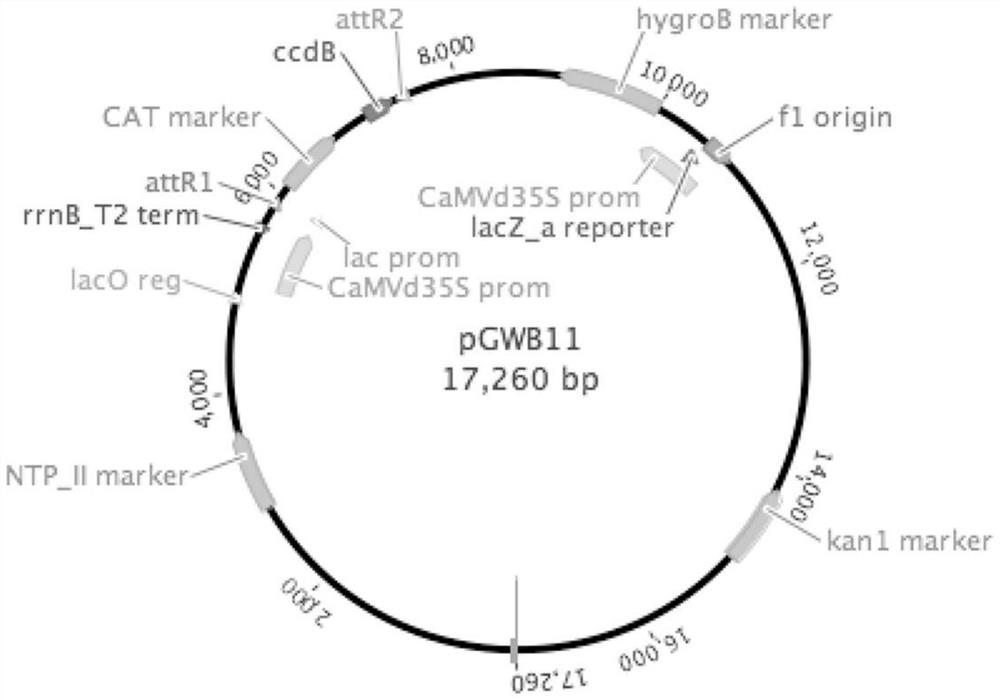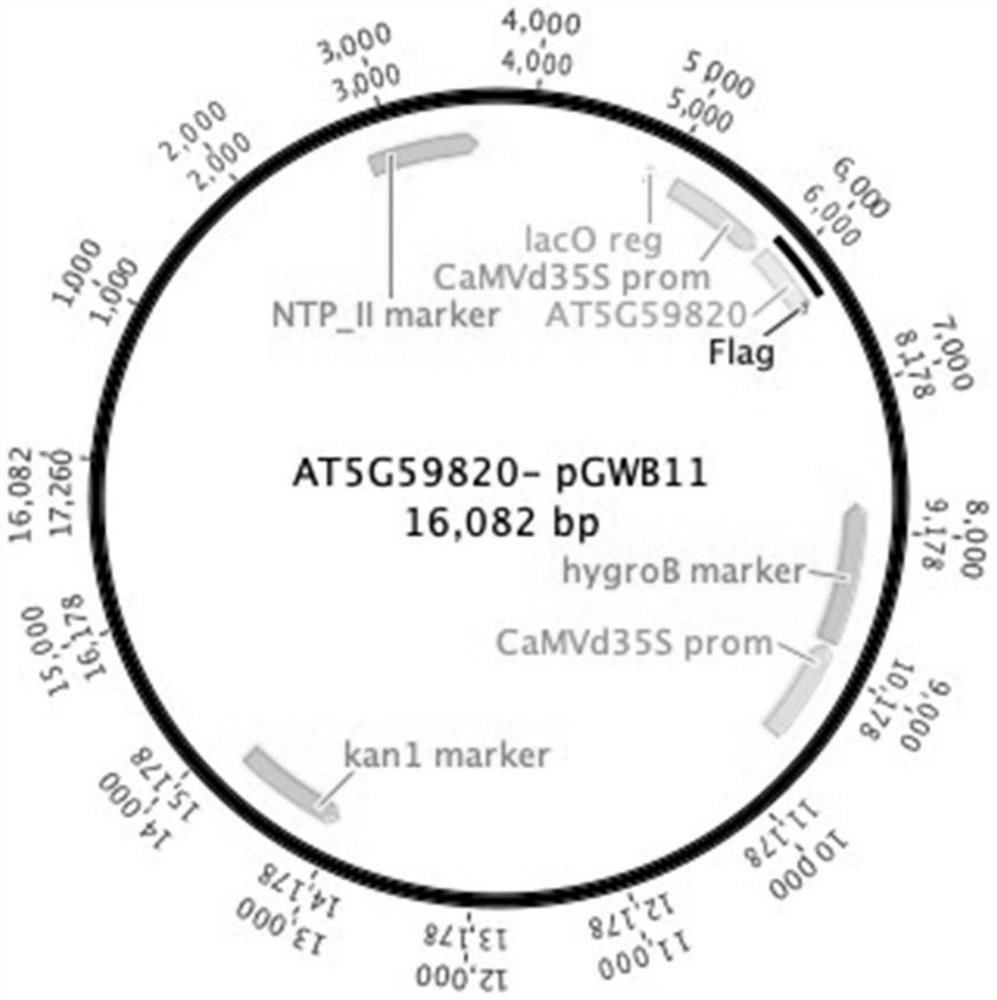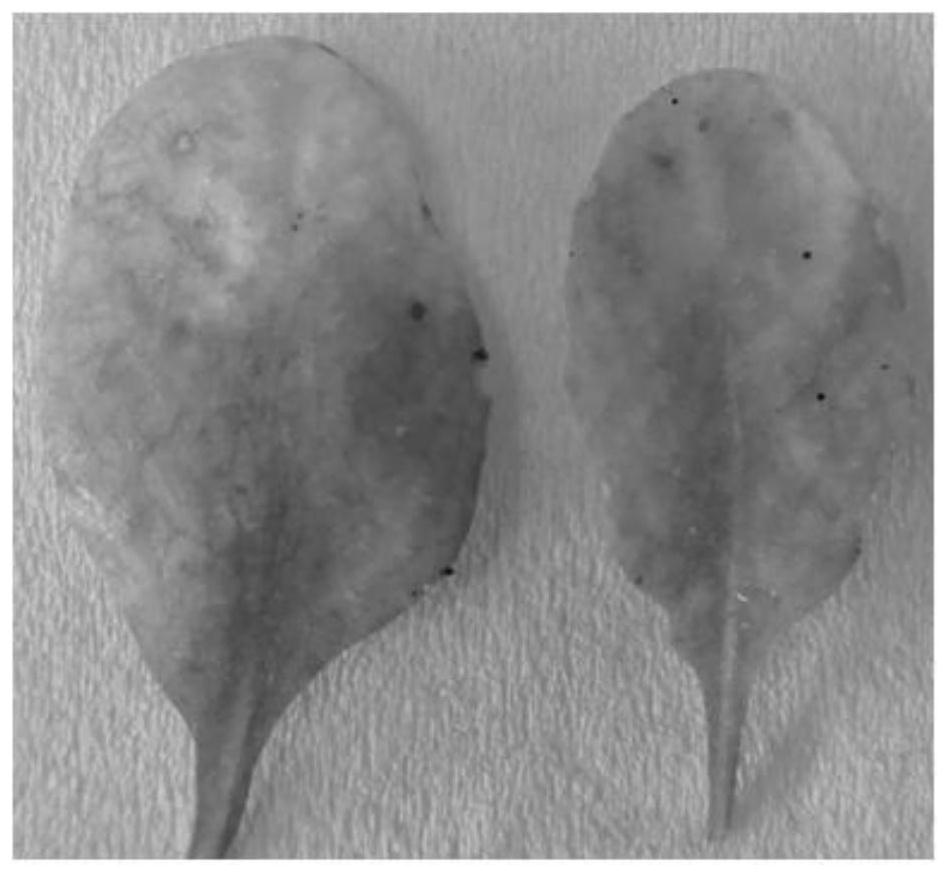Application of arabidopsis transcription factor AT5G59820 gene in cultivation of disease-resistant transgenic plants
A technology of AT5G59820, transgenic plants, applied in the field of genetic engineering, can solve problems such as secondary pollution and ecological hazards
- Summary
- Abstract
- Description
- Claims
- Application Information
AI Technical Summary
Problems solved by technology
Method used
Image
Examples
Embodiment 1
[0012] Example 1 Acquisition of Arabidopsis thaliana transcription factor AT5G59820 gene sequence and construction of plant expression vector.
[0013] Login to the Arabidopsis Information Resource Database website
[0014] https: / / www.arabidopsis.org / servlets / TairObject?id=en type=sequence&id=125264, find the sequence of transcription factor AT5G59820 gene (SEQ ID No. 1), and design PCR amplification primers according to the CDS of AT5G59820 gene,
[0015] AT5G59820-F:5'-ATGGTTGCGATATCGGAGATC-3'
[0016] AT5G59820-R:5'-ATAAACTGTTCTTCCAAGCTC-3'
[0017] The wild-type Arabidopsis Col-0 was cultivated, and the Arabidopsis thaliana leaves grown in short-day for 3 weeks were used as materials, and the total plant RNA was extracted by TRIzol method.
[0018] The specific steps for RNA extraction are as follows: Grind and pulverize Arabidopsis leaves in a liquid nitrogen environment. After the liquid nitrogen is completely volatilized, the samples are dispensed into a centrifuge ...
Embodiment 2
[0021] Example 2 Obtaining of transgenic Arabidopsis plants
[0022] First, the plants were cultivated to the flowering stage, and then transformed with the Agrobacterium dipping method. After the seeds were collected, the transgenic plants were screened.
[0023] The method of plant cultivation:
[0024] Take enough Arabidopsis seeds into centrifuge tubes for surface sterilization. First, use 75% ethanol for surface disinfection for 30s, rinse once with sterile water, then use 1% NaClO for surface disinfection for 5-8 minutes, then rinse with sterile water three times; after surface disinfection, the treated seeds are sown in 1 / 2MS culture on the base plate. The spotted plates were sealed with parafilm and placed in the dark at 4°C. After 2-4 days, the plates were placed in a plant light incubator (light cycle of 12h light / 12h dark). Eight days after seed germination, Arabidopsis seedlings were transferred to nutrient soil, grown under the same light conditions, and water...
Embodiment 3
[0029] Example 3 Verification of transgenic Arabidopsis
[0030] The genomic DNA was extracted from the leaves of the transgenic plants and verified by PCR to confirm that the AT5G59820-flag DNA fragment was inserted into the Arabidopsis genome.
[0031] Extraction of genomic DNA:
[0032] Take 50 mg of normal growing Arabidopsis thaliana leaves to be tested and grind, add 400 μL of plant genomic DNA extract (200 mM Tris-Cl pH7.4, 250 mM NaCl, 25 mM EDTA, 1% SDS), vortex and mix, and then centrifuge at high speed for 5 min. Aspirate the supernatant and add an equal volume of isopropanol, precipitate for 30 min at room temperature, discard the supernatant after high-speed centrifugation for 5 min, wash the precipitate twice with 70% ethanol, and dissolve the precipitate in 20 μL of nuclease-free ddH 2 O.
[0033] PCR amplification using specific primers of the pGWB11 vector:
[0034] PCR was performed using the genomic DNA extracted above as a template. The system included 4...
PUM
 Login to View More
Login to View More Abstract
Description
Claims
Application Information
 Login to View More
Login to View More - R&D
- Intellectual Property
- Life Sciences
- Materials
- Tech Scout
- Unparalleled Data Quality
- Higher Quality Content
- 60% Fewer Hallucinations
Browse by: Latest US Patents, China's latest patents, Technical Efficacy Thesaurus, Application Domain, Technology Topic, Popular Technical Reports.
© 2025 PatSnap. All rights reserved.Legal|Privacy policy|Modern Slavery Act Transparency Statement|Sitemap|About US| Contact US: help@patsnap.com



